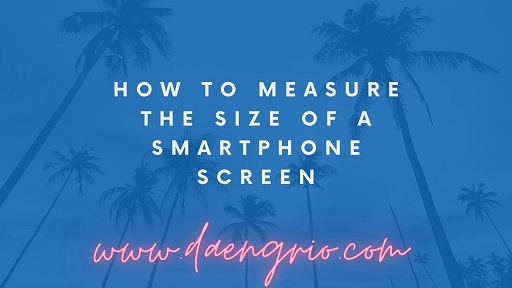Smartphones come in a range of sizes, and knowing how to measure the screen size of a smartphone will help you make the best decision. The conventional unit for measuring screen size is pixels, which are the number of dots on a display. You may calculate the screen size of your smartphone by multiplying the width and diagonal length by the pixel density. This figure will differ based on the manufacturer of your smartphone and the sort of screen it has.

A smartphone’s screen size is often reported in inches and can be determined in two ways. The diagonal measurement of the screen is often reported in inches, whereas the pixel count on both sides is typically expressed in centimeters. In many countries, phone screen sizes are measured using the metric system.
Another method for calculating smartphone screen size is to look at the resolution. The better the resolution, the higher the quality. The resolution of your screen is critical if you want the sharpest, most detailed visuals. If the size of your screen bothers you, seek for a smartphone with a higher resolution.
Screen size varies by brand and model and is an important consideration when purchasing a new smartphone. It is recommended to select a smartphone that is appropriate for your hand size and preferences. A larger screen might be better for someone with little hands, while a smaller one might be better for someone with medium hands.
PPI is another technique to determine the screen size of a smartphone (Pixels Per Inch). The industry standard for mobile phone display resolution is pixels per inch. The actual characteristics of every smartphone may be found by visiting the manufacturer’s website. Furthermore, screen size and resolution can have a significant impact on display quality.
Smartphone screen sizes differ depending on the brand, model, and style. The gap in smartphone screen sizes may not be as significant as you believe. For example, you might be shocked to learn that the difference in screen sizes between the iPhone and the Samsung is only a few millimeters. The same holds true for tablet screens.
Understanding screen size is critical when creating an app for mobile devices. To design an appropriate app, you must consider the size and resolution of the screen. The screen size will affect how your app looks and functions on different screens. Cart abandonment increases with smaller screen sizes, which can be a serious issue if you want your app to be successful. You must make your app versatile if you want it to look well on different screens.